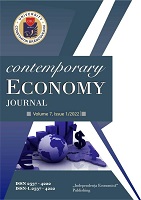ASSESSING SOME FISCAL INDICATORS IN THE EUROPEAN UNION IN THE PERIOD 2000-2021
ASSESSING SOME FISCAL INDICATORS IN THE EUROPEAN UNION IN THE PERIOD 2000-2021
Author(s): Alina Georgeta AilincăSubject(s): Transformation Period (1990 - 2010), Present Times (2010 - today), EU-Approach / EU-Accession / EU-Development, Fiscal Politics / Budgeting
Published by: EDITURA INDEPENDENŢA ECONOMICĂ
Keywords: cyclical adjusted primary balance; fiscal stance; fiscal impulse; automatic stabilisers; EU;
Summary/Abstract: COVID-19 has posed many problems to the world's economies beyond its dramatic medical effects. The beginning of 2022, under the auspices of the war in Ukraine, brings and will continue to bring additional challenges for the world's economies and especially for European economies. In this context, marked by high fears and uncertainties, worldwide, fiscal policy strives to control expanding public debt but also the level of taxes and duties, boost revenue and control spending. Therefore, this article highlights the study of some basic fiscal indicators at European Union level for the period 2000-2021. The indicators followed are overall balance, primary balance, cyclically adjusted primary balance, automatic stabilizers, fiscal stance, fiscal impulse and fiscal multiplier (more exactly impact multiplier of expenses). The results show that there are many fiscal and budgetary issues to be addressed by expansionary or contractionary European Union policy measures, and that the pandemic crisis and the war crisis could make matters worse in the future.
Journal: REVISTA ECONOMIA CONTEMPORANĂ
- Issue Year: 7/2022
- Issue No: 1
- Page Range: 28-37
- Page Count: 10
- Language: English

